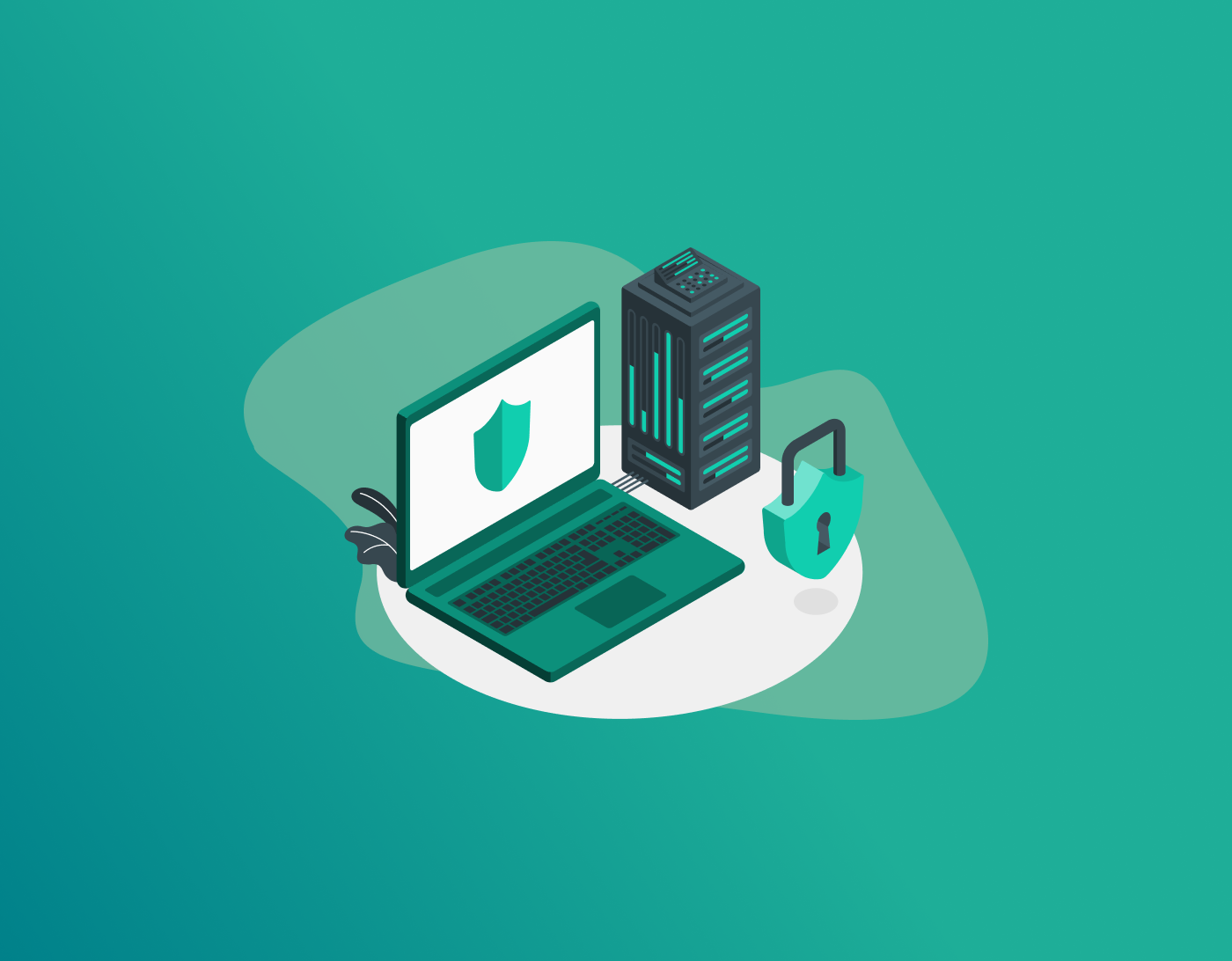
Data security is keeping your digital data safe from burglars, leaks, or destruction. For a small business owner, this may seem daunting at first, but it all comes down to simple measures that guard what matters. Data security is like locking doors and windows to your office: it keeps others from snatching customer files, financial documents, or confidential plans. Indeed, data security is “safeguarding digital information from unauthorized access, loss, or alteration, maintaining confidentiality, integrity, and availability“. Once you know what data security is and why it is important, you can fortify better protection for your business and consumers.
Why It Is Necessary to Protect Business Data
Data security isn’t a buzzword – it‘s a must for every company, large and small. Each item of information your business possesses (customer lists, financial records, trade secrets, etc.) is worth something and requires protection. A single breach can be devastating: studies show small businesses often pay anywhere from $120,000 to over $1.24 million to respond to a data breach. In one report, the average cost of a breach for a company under 500 employees was $3.31 million. Beyond dollars and cents, breaches destroy customer trust: one survey found 75% of U.S. consumers would stop buying from a brand after a cyber incident. In short, an attack can cost you money, reputation, and customers – all at once.
To small businesses, these dangers are particularly concerning since the bad guys like to hit them. Actually, estimates are that some 75% of all victims of cyber attacks are small businesses. Lacking the deep pockets of a large corporation, a breach could cause a small business to close its doors. Between compliance fines on lost data (consider GDPR, HIPAA, etc.) and recovery costs, the consequences are debilitating. That‘s why data protection is not a choice – it‘s critical to keeping your company in business.
Common Threats That Expose Your Data to Risk
Securing data begins with understanding the risks that are out there. Small companies are threatened by a whole array of threats, and some of the most prevalent ones include phishing schemes, malware, ransomware, and even accidents on the part of employees. For instance:
- Phishing and Social Engineering: Attackers frequently email or message fake but convincing-looking emails (an imitated “bank alert,” for example) to get someone to disclose passwords or click malicious links. They can also defeat defenses by deceiving your employees.
- Malware and Ransomware: Malicious software can creep into your system via downloads or email attachments. Ransomware is particularly malicious – it encrypts your files and pays to unlock them.
- Insider Mistakes: Not all threats are from strangers. Nice employees can unintentionally expose data through misconfigured settings, a lost device, or weak passwords.
Research verifies these are the most significant dangers facing small businesses. One click of a booby-trapped link or one misplaced laptop can invite an intruder in. That is why awareness is so important: stay ahead by keeping your staff apprised about suspect mail and unfamiliar machines, and employ sound security practices to deny these easy threats.
The Main Types of Data Security Solutions
Once you know about the threats, you can select tools to protect against them. Data protection strategies are primarily:
- Data Encryption: This encrypts information so only those with the proper key can view it. You can encrypt computer files, or employ HTTPS/SSL so information traveling (such as online purchases) is secure. Even if a hacker captures encrypted information, it‘s meaningless without the key. Employing solid encryption is a simple defense most specialists advise.
- Secure deletion of data: When you no longer require sensitive information, shred it in a secure manner. For instance, utilize software that overwrites files a number of times before deletion, or physically eliminate obsolete drives. That way, if a trespasser comes across an old hard drive or USB stick, he/she will be unable to retrieve your outdated information.
- Data Masking: This method obscures actual data by substituting it with fictional but realistic values. For instance, a development team can utilize masked data to test so they‘re not subjected to actual customer information. Masking renders data workable for work purposes while safeguarding the actual values.
- Building Resilience Into Data Systems: This involves anticipating attacks prior to occurring. Adhere to a robust data security policy: determine your most sensitive information, secure your databases, and impose rigid access controls.
- Keep backups (on separate systems or offline): to recover if something is lost or encrypted by ransomware. Essentially, make sure that if an attack does occur, you can bounce back quickly without losing everything.
Each of these solutions fits together. Encrypt critical information, delete old data properly, mask anything unnecessary, and build a system (with backups and monitoring) that can handle an attack. Together, they form a robust shield around your business’s data.
How Data Security and Data Privacy Differ
It is simple to confuse data privacy and data security, as both are concerned with data. They are concerned with different things, though. Data security is concerned with safeguarding data – making it safe from intrusions or spills. On the other hand, data privacy concerns what is done with data. For instance, data security would encrypt customer information on your server so a thief can’t access it. Data privacy would govern which parts of those records you’re allowed to collect or share (such as a customer’s personal info). In simple terms, data security safeguards information from wrongdoers, while data privacy sets the rules for who gets to see or use personal data. As one legal guide puts it, “data security protects information from unauthorized access, use, and disclosure,” whereas data privacy gives individuals control over who can see their personal info and how it’s used.
Each of these frameworks has its own rules, but the takeaway is: if you handle customer data, payment info, or health records, look into the rules that apply to your industry and location. Following those requirements is not just good practice—it’s often legally necessary.
Smart Data Security Habits to Adopt
Securing data is not just about tools; it‘s also about good behavior. Here are important practices to incorporate into your day-to-day operations:
- Train Your Crew: Educate everyone on how to recognize phishing, lock their screens, and alert others to suspicious activity. Your people are your first line of defense.
- Use Strong Passwords: No more weak or shared logins. Use a password manager to create and store secure, unique passwords for every account.
- Encrypt Sensitive Data: Always encrypt files—especially on laptops, phones, and over the internet. It keeps info safe if a device is lost or stolen.
- Back Up Your Data: Follow the 3-2-1 rule—3 copies, 2 formats, 1 offsite. Test your backups so you’re not caught off guard.
- Plan for Breaches: Have a response plan ready. Know who to call, what to say, and how to react quickly in case things go wrong.
- Turn On MFA: Multi-factor authentication adds an extra layer of security. It‘s an easy step that blocks most attacks.
- Protect Email: Filter spam, scan for threats, and train your team to think twice before clicking or responding to suspicious emails.
A Look Ahead: The Future of Data Protection
The world of data security is always changing. Looking forward, expect these trends:
- Artificial Intelligence (AI): AI will be a double-edged sword. On defense, AI and machine learning will help detect unusual activity and stop breaches faster. Attackers will employ AI to create more effective phishing or attempt to breach compromised security. In a recent survey, almost 70% of organizations reported that the rapid pace of AI (particularly generative AI) is a leading security worry. To remain ahead requires employing AI tools judiciously and regularly educating your staff on new types of attacks.
- Zero Trust Architecture: The traditional concept of a static network perimeter is disappearing. Increasing numbers of businesses are embracing zero trust security, where all access requests are treated as untrusted until authorized (the mantra is “never trust, always verify“). This involves authenticating users and machines on an ongoing basis, and tightly controlling privileges. Small businesses need to look towards zero-trust models (such as micro-segmentation of their network or re-authentication for high-risk actions) as such paradigms gain popularity.
- Cloud & Remote Work: The shift to cloud services and remote work will continue, making secure cloud configuration even more critical. We’ve already seen that data in the cloud can be a bigger target, so expect new cloud security services and best practices to emerge. Make sure your business stays up-to-date with securing off-site data and remote devices.
- Improved Privacy Regulations: Additional areas are strengthening privacy regulations (following the lead of examples such as GDPR and CCPA). Anticipate new local or industry-specific data protection regulations. Getting ahead of these will involve incorporating data privacy into your practices (such as data minimization and explicit usage terms).
In all, data protection will be based on more intelligent automation (AI-based defenses), more robust encryption, and an emphasis on resilience. The objective remains the same: keep customer confidence and your bottom line intact. Through foresight planning, your company can transition to these changes with ease.
How FastestPass Makes Security Simple
Securing data can be daunting, but programs like FastestPass Business simplify things. It securely stores your employees’ passwords in a hardware-encrypted vault and generates strong, random passwords for each login—no more using old or identical passwords. You can also securely share access with colleagues and decide who can see what. FastestPass accommodates multi-factor authentication and securely stores other sensitive data as well, making your team‘s best practices easy to maintain. In short, it’s an easy way to lock down one of the most critical parts of your security—without slowing anyone down.
Final Thoughts
Data security is an ongoing journey, not a one-time project. By understanding what is data security and why it matters, you’ve already taken a big first step. Remember: begin with the basics (keep software up to date, have strong passwords, and educate your staff), and then add in extra protections (such as encryption, backup, and the proper tools). Monitor new threats and adjust accordingly. Data security guards your customers, your reputation, and your future business. Ultimately, good data security habits allow you to build your business with confidence, knowing your most valuable data is secure.
Generate passkeys, store them in vaults, and safeguard sensitive data! Receive the latest updates, trending posts, new package deals,and more from FastestPass via our email newsletter.
By subscribing to FastestPass, you agree to receive the latest cybersecurity news, tips, product updates, and admin resources. You also agree to FastestPass' Privacy Policy.
Secure and Create Stronger Passwords Now!
Subscribe to Our Newsletter







